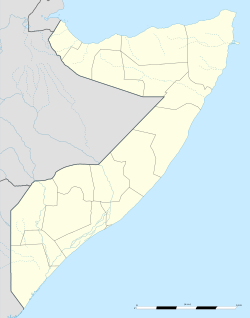Overview
Wajid is located approximately 302 kilometres (188 mi) northwest of the national capital Mogadishu, 78 kilometres (48 mi) southwest of Hudur, and 69 kilometres (43 mi) southeast of the Somalia-Ethiopia border.
In March 2014, Somali Armed Forces assisted by an Ethiopian battalion with AMISOM captured the district from Al-Shabaab. [1] The offensive was part of an intensified military operation by the allied forces to remove the insurgent group from the remaining areas in southern Somalia under its control. [2]
According to Prime Minister Abdiweli Sheikh Ahmed, the government subsequently launched stabilization efforts in the newly liberated areas, which also included Hudur, Rabdhure and Burdhubo. The Ministry of Defence was providing ongoing reassurance and security to the local residents, and supplying logistical and security support to deliver relief assistance. Additionally, the Ministry of Interior was prepared to support and put into place programs to assist local administration and security. A Deputy Minister and several religious scholars were also dispatched to all four towns to coordinate and supervise the federal government's stabilization initiatives. [3]
This page is based on this
Wikipedia article Text is available under the
CC BY-SA 4.0 license; additional terms may apply.
Images, videos and audio are available under their respective licenses.
